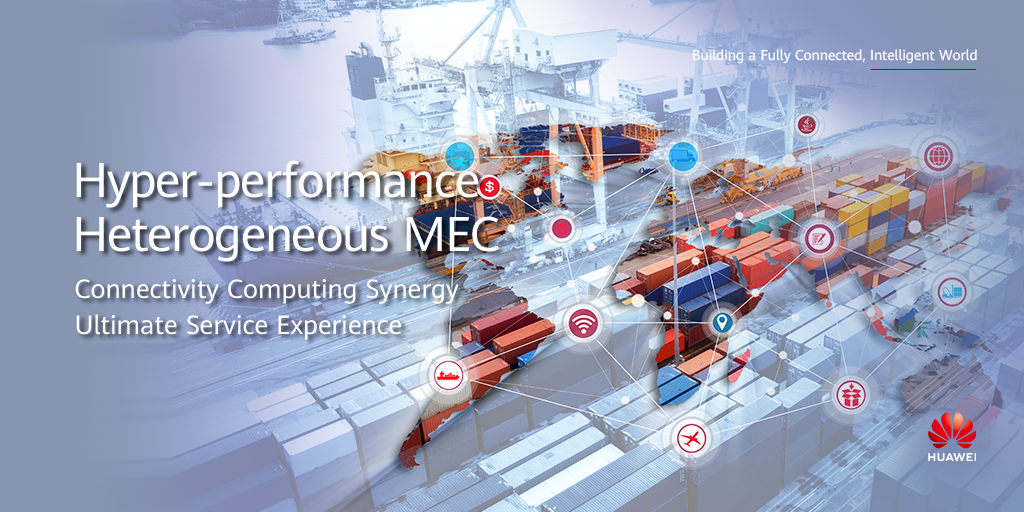5G MEC, Redefining the Business Value of Telecom Networks
5G is getting more and more attention, as are 5G-related technologies and concepts. One of them is Multi-access Edge Computing (MEC). What does MEC have to do with 5G?
Is MEC the key for achieving ultra-low latency? Can MEC provide a way out of traffic stress for the backbone? Is it the guardian of data privacy for enterprises? Is it the host for an open ecosystem on the network edge? Is it mandatory for evolution towards 5G SA? What are the vertical market opportunities MEC can bring to telecom operators?

5G MEC, Innovation Center on Telecom Networks
According to the 3GPP, a 5G system adopts CUPS architecture, in which the control plane and user plane are separated. The user plane functions (UPF) are moved to the edge, which makes MEC possible. MEC brings network capabilities closer to end users and supports distributed deployment. With MEC, telecom operators can share their network capabilities to third parties, building an ecosystem around their networks and exploring new business value chains. MEC is also essential to many 5G applications, such as Internet of Vehicles (IoV), ultra-HD multimedia, drones-based services, video surveillance, and Internet of Things (IoT).
Vertical industries will also benefit from 5G MEC. MEC can help enterprises build ubiquitous connectivity, not only between people for a more efficient mobile working environment, but also between things, and between people and things to implement more use cases, such as smart factories, smart ports, and smart hospitals.
These use cases usually involve various applications, requiring the network to provide strong processing capabilities. MEC enables a network to provide the compute and storage capabilities at the edge. Data is processed, saved, and delivered locally, without having to be hauled back to the network center. Latency is greatly shortened and data privacy are better secured. 5G MEC supports connectivity and computing synergy to provide more efficient interactions with end users. Enterprises are able to utilize powerful telecom network capabilities such as high speed mobility, SLA assurance, and location services.
According to Deloitte's research on 5G, Internet application will evolve from customer level to industry level by 2035. Massive data growth will be generated from HD surveillance, automatic driving, smart factory, and other industry level applications. It is predicted that a large part of the data will be handled by the 5G MEC. 5G MEC will become the major battleground of the 5G global industry chain, an industry chain expected to be worth more than 10 trillion US dollars.
5G MEC, Enabler of New Business
MEC features synergy of connectivity, compute, and applications, which is far more advantageous than cloud-based data centers. With this ability, telecom operators are able to provide various services and network capabilities to customers, including:
● Local service processing
With 5G network's CUPS architecture, operators can deploy MEC nodes flexibly at the edge DCs or local ventures, having service requests processed locally.
● Powerful compute capability
Operators can open their powerful compute capability to customers through their MEC platform.
● Network capability exposure
Third-party applications can register with the MEC platform to utilize and manage edge network capabilities. Network capability exposure enables operators to explore more business models.
MEC brings more business opportunities. In malls and university areas that are filled with high-value users, 5G MEC can provide value added services, such as local cache service, location service, and targeted advertising. At business campuses, factories, and seaports, 5G MEC can provide enterprise-level services, such as virtual private networks, service hosting, and dedicated applications. In some use cases, such as IoV, CDN, and Internet gaming, where end users are spread out across a large area, 5G MEC can provide cloud-based distributed resource pools to third-party service providers.
Aiming to better support these new MEC service scenarios, the Huawei 5G MEC platform is equipped with advanced functions:
● Automatic deployment of dynamic uplink classifier (UL CL)
UL CL diverts uplink traffic based on destination application servers. Automatic and dynamic deployment of UL CL ensures service continuity in fast mobility scenarios.
● Analysis-based API opening
The 5G MEC platform analyzes edge services using big data and AI. When an error occurs, the analysis results will instruct the platform to open corresponding APIs to achieve quick self-healing and optimization.
● User-based and service-based dynamic slicing
● Automatic O&M
Huawei strives to be a reliable partner to telecom operators by providing solutions with cloud native architecture, strong connectivity, ultimate performance, simplified O&M, and open ecosystem.
MEC has outstanding performance and flexible deployment. It will become the new business enabler and key platform, redefining the value of telecom networks.